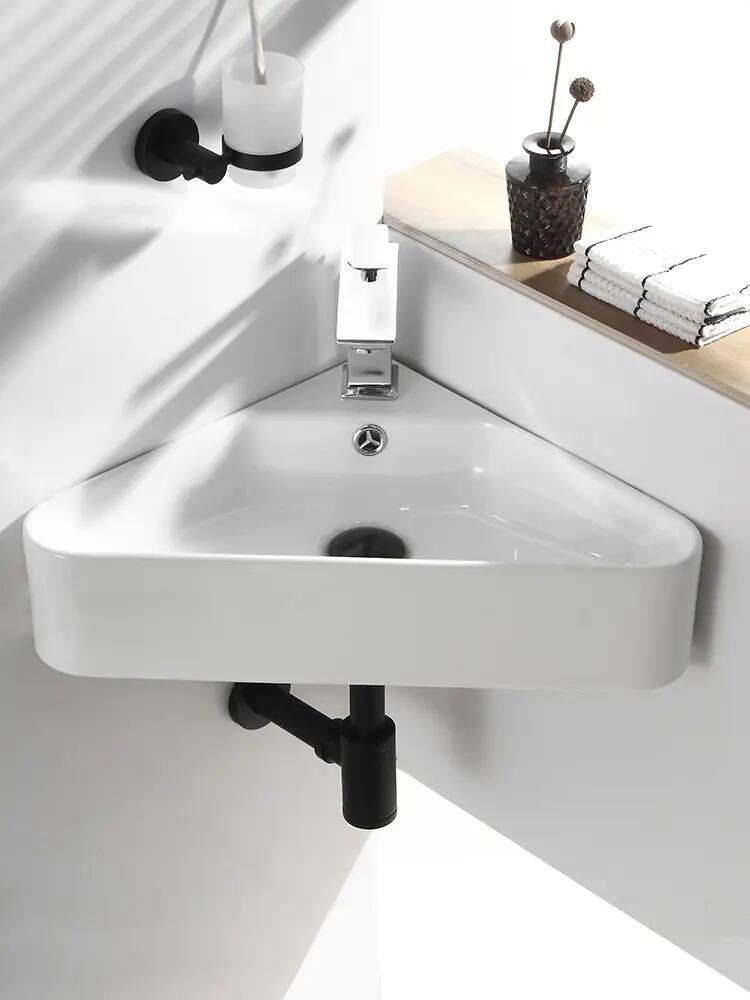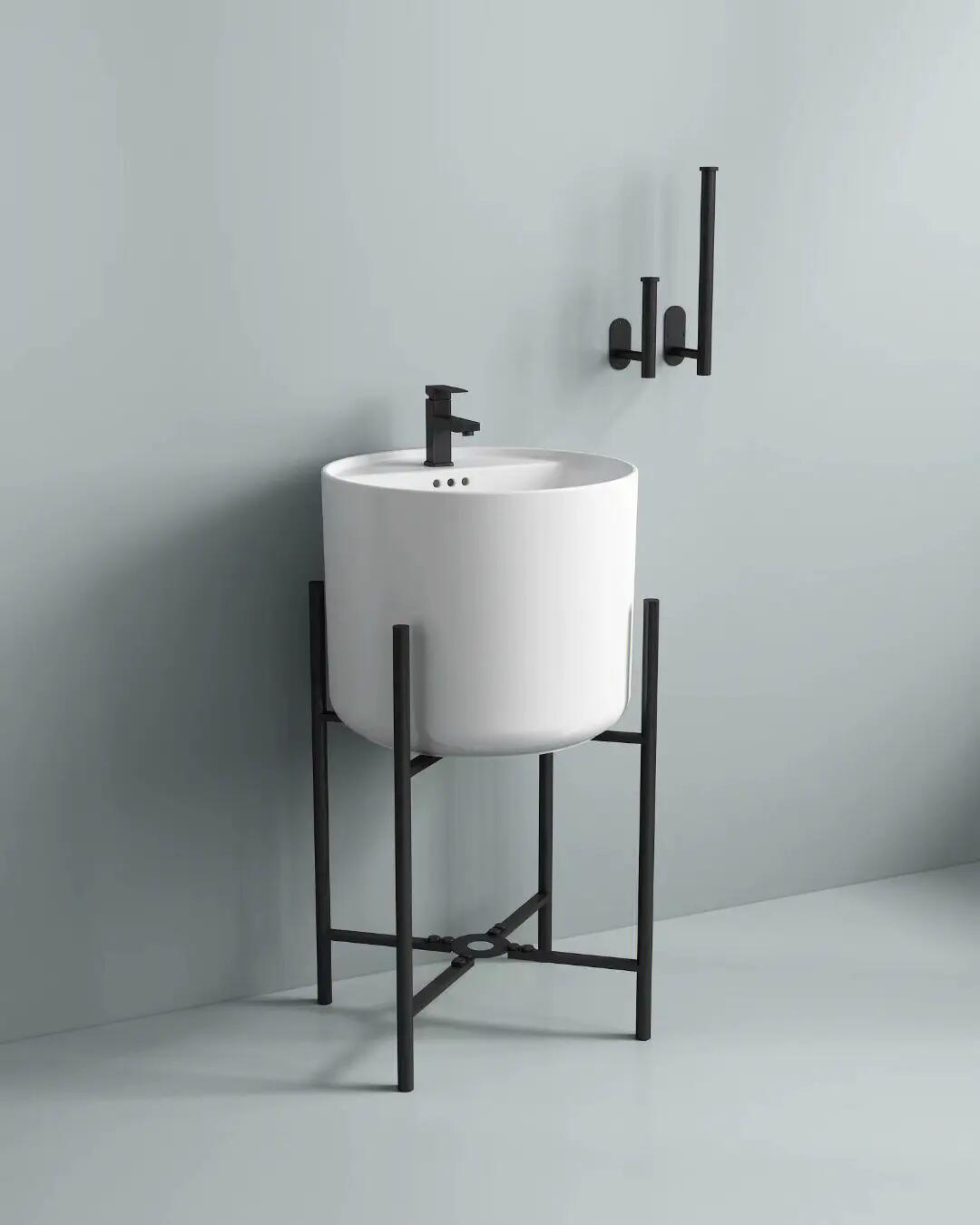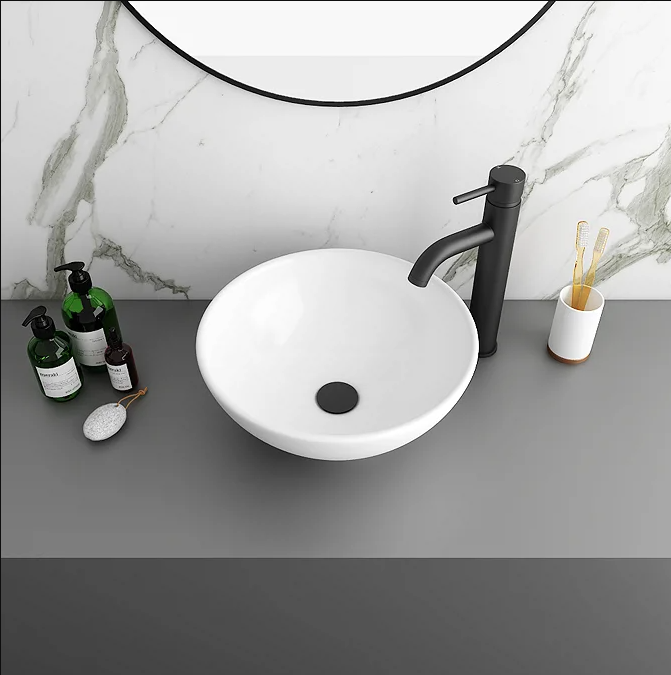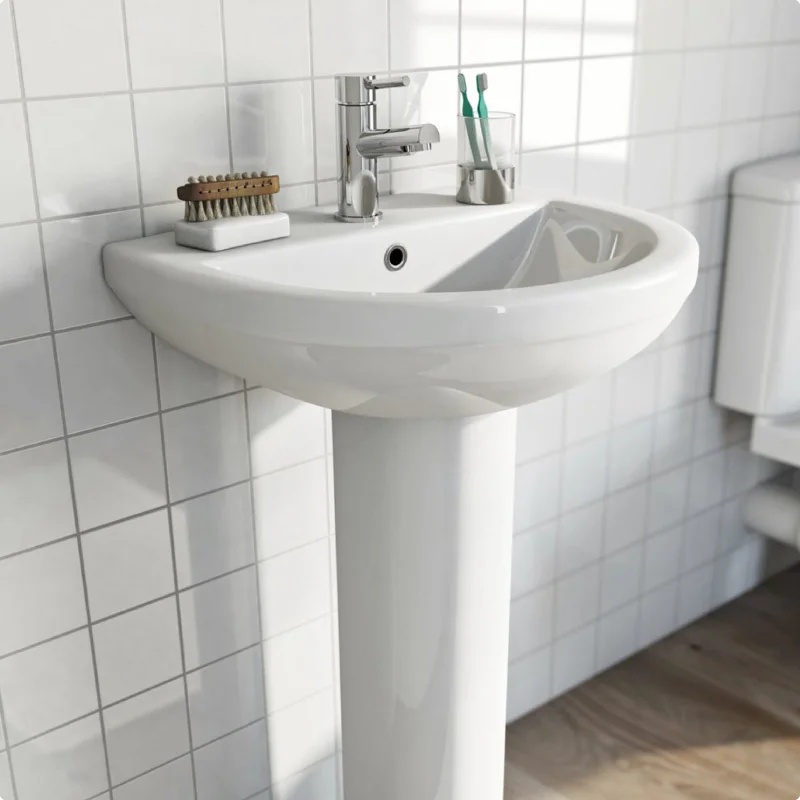Ceramic washbasins are widely used in bathrooms, kitchens, and other areas where hand hygiene is essential. They are known for their durability, versatility, and aesthetic appeal. In this article, we will delve into the classification of ceramic washbasins, exploring their different features, advantages, and disadvantages.
Pedestal Washbasins:
Pedestal washbasins are free-standing units with a pedestal base supporting the basin. They offer a classic and elegant look to the bathroom. The pedestal conceals plumbing pipes, providing a clean and polished appearance. However, these washbasins may lack storage space and are generally suitable for smaller bathrooms.
The pedestal basin has a simple design that gives it a clean and tidy appearance because the drain is hidden in the columns of the tub. The design of the column basin is more humane, and when washing hands, the human body can naturally stand in front of the basin, so that it is more convenient and comfortable to use. Stand-up basins are suitable for restrooms with small areas. It can be matched with high-end interior decoration and other luxury sanitary ware. At the same time, this washbasin is simple and elegant, but it does not have a storage function, and needs to be equipped with a mirror box or wash rack to use the space above the basin to put some toiletries and cosmetics.

Wall-Mounted Washbasins:
Wall-mounted washbasins are affixed to the wall with brackets or screws, leaving the floor space underneath free. This design creates an illusion of more space and is perfect for compact bathrooms. The lack of a pedestal or cabinet allows for easy cleaning and maintenance. However, installing wall-mounted washbasins requires proper wall support and professional installation services.
Compared with traditional floor-standing basins, the biggest advantage of wall-mounted basins is that they save space. Because it doesn’t need a bracket at the bottom, it only needs to make a few holes in the wall to install, which greatly reduces the footprint of bathroom space. Wall-mounted basins do not require a bracket at the bottom, so there is no debris and dust on the floor, which is very convenient for cleaning. And the underside of the wall-hung washbasin is easier to clean, so there are no crevices and dirt to hide, so you can keep your bathroom clean and tidy. The design of wall-mounted washbasins is very stylish and suitable for a variety of individual decoration styles. Because it doesn’t require the support of a stand, it can be hung in any suitable position, which gives more space for the design of the bathroom.

Wall hung basin
Countertop Washbasins:
Countertop washbasins sit on top of a countertop or vanity unit, adding a touch of luxury to the bathroom. They come in various shapes and sizes, offering flexibility in design. Countertop washbasins are ideal for larger bathrooms and provide ample storage space beneath. However, they require a sturdy and spacious countertop for installation.
Semi-Recessed Washbasins:
Semi-recessed washbasins are partially installed into the countertop, creating a sleek and streamlined appearance. These washbasins save space and offer a contemporary look. They are widely used in modern bathrooms and small cloakrooms. However, installation can be complex, and the exposed countertop may require maintenance and cleaning.
Undermount Washbasins:
Undermount washbasins are installed beneath the countertop, providing a seamless and flush look. They are popular for their sleek and minimalist design. Undermount washbasins are easy to clean, as there are no seams or edges where dirt can accumulate. However, proper installation is crucial to prevent water leakage, and they may require specific countertop materials.
Conclusion:
Ceramic washbasins offer a wide range of options for different bathroom aesthetics and functional requirements. Whether it’s the classic elegance of a pedestal washbasin or the modern sleekness of an undermount design, ceramic washbasins bring durability and aesthetic appeal to any space. While each classification has its own advantages and disadvantages, it’s important to consider factors such as bathroom size, storage needs, installation requirements, and personal preferences. By understanding the various features and nuances of each type, one can make an informed decision and create a stunning and functional bathroom space.




